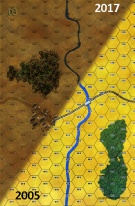|
The Storming of Sobieszczany Franz Josef's Armies #10 |
||
|---|---|---|
| (Defender) Russian Empire | vs | Austro-Hungarian Empire (Attacker) |
| Formations Involved | ||
|---|---|---|
| Austro-Hungarian Empire |  |
46th Landwehr Infantry Division |
| Russian Empire |  |
18th Infantry Division |

|
| Overall Rating, 0 votes |
|---|
|
0
|
| Scenario Rank: of |
| Parent Game | Franz Josef's Armies |
|---|---|
| Historicity | Historical |
| Date | 1914-08-27 |
| Start Time | 07:00 |
| Turn Count | 24 |
| Visibility | Day |
| Counters | 84 |
| Net Morale | 0 |
| Net Initiative | 1 |
| Maps | 2: 1, 3 |
| Layout Dimensions | 56 x 43 cm 22 x 17 in |
| Play Bounty | 227 |
| AAR Bounty | 222 |
| Total Plays | 0 |
| Total AARs | 0 |
| Battle Types |
|---|
| Bridge Control |
| Inflict Enemy Casualties |
| Urban Assault |
| Scenario Requirements & Playability | |
|---|---|
| Fall of Empires | Maps + Counters |
| Franz Josef's Armies | Base Game |
| Introduction |
|---|
|
While 12th Infantry Division (including the 101st Landsturm Brigade) carried the weight of Dankl’s attack plan, the divisions to its right were to feint against the Russians and hold them in place. But in August 1914, Austro-Hungarian officers understood no difference between “feint” and “all-out attack.” In what had become a pattern for FML Karl Nastopil’s 46th Landwehr Infantry Division, the Polish regulars charged forward without the benefit of artillery support. |
| Conclusion |
|---|
|
Sheer Polish battle-madness carried the Landwehr through the Russian positions and into Sobieszczany, driving the Russians back over the small Nedznica River. Once again, the Poles suffered appalling losses, particularly among their officers. The 46th Landwehr Infantry Division went to war as a crack outfit, but already – less than a week after the division’s combat debut – the march battalions streaming forward from the regimental depots could not restore all of the losses. |

 FrJo009
FrJo009 






















